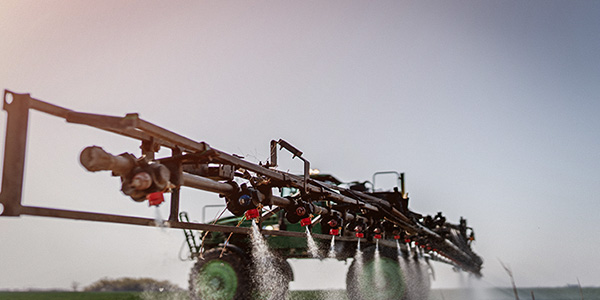AGRONOMICSUPPORT
YOU CAN TAKETO THE FIELD
Importance of Fall Weed Control
As we move into November, corn and soybean harvest is either completed, or on the downhill slide. With harvest being such a busy time of year, it’s easy to forget that the 2021 growing season begins as soon as the combine leaves the field. With the increase in herbicide resistant weed species, weed control is a growing concern each season. A herbicide application in the fall is a great way to stay ahead of the game and control winter annual weeds that emerge during and after harvest. This method will help you keep up with the “start clean stay clean” control program.
Importance of Fall Weed Control
An increase in reduced or no till farming means there has been an increase in winter annual weed species such as chickweed, henbit and shepherd’s purse. Marestail is another weed that can follow a winter or summer annual lifecycle and cause issues. Fields with a history of Marestail can benefit from a fall herbicide, due to resistance and difficulty controlling in the spring. Warmer weather and late rains can cause these winter annuals to become worse than normal years. It is also important to note which fields had more weed pressure than others. This year, weed control was a big problem in-season and fall applications can keep these weeds at bay.
When To Apply
Typically, the best time to apply a fall burndown is from mid-October through mid-November. Herbicides can be applied after this time, but weeds are less susceptible to herbicides after a hard freeze. A typical burndown mix in the fall is a combination of glyphosate with 2,4-D and/or Dicamba. This allows you to control emerged weeds early and put less pressure on our spring burndown applications to make them more effective.
Whether or not to include a residual herbicide in the mix gets quite a bit of debate. A lot of this decision is dependent on the weather and your winter climate. A residual in the fall can keep a field clean until planting season, but in the event of a harsh cold winter, a residual can last too long and injure the next crop. Also, in the event of a mild winter, the residual can break down quickly and not be effective. For these reasons, it is typically recommended to hold off on the residual tank mix. With fall burndown applications, it is also recommended to keep the cost at a reasonable level and allow room in your budget for effective pre-emerge and post-emerge applications in the spring.
Benefits of Fall Weed Control
Weed control is by far the most important part of a fall burndown application, but farmers sometimes forget about the tangible benefits that come along with it. The first one is your soil conditions. Having a clean field in the spring with lower weed pressure warms the soil up faster with less trash on the surface, allowing even emergence and better stands. Another benefit is less insect pressure. Fields with heavy weed pressure will attract insects like black cutworm moths to lay eggs in the spring and cause problems for the upcoming crop. Henbit can also be a host for soybean cyst nematodes. The other benefit is giving you flexibility with your spring burndown application. As we all know, spring can be a narrow window to get all our field work done. With a fall burndown, we can buy ourselves a little more time to target smaller weeds in the spring with our preplant applications.
Fall herbicide applications are a great way to get a head start on the upcoming season. Make sure you always follow label instructions and practice good environmental stewardship when you’re applying. For local recommendations and suggestions, feel free to contact your local LG Seeds team. Have a safe and successful finish to #Harvest2020.
Want more from this author? Check out his podcast recapping 2020 harvest and sharing tips for 2021.
LISTEN IN >






Technical Team Agronomist